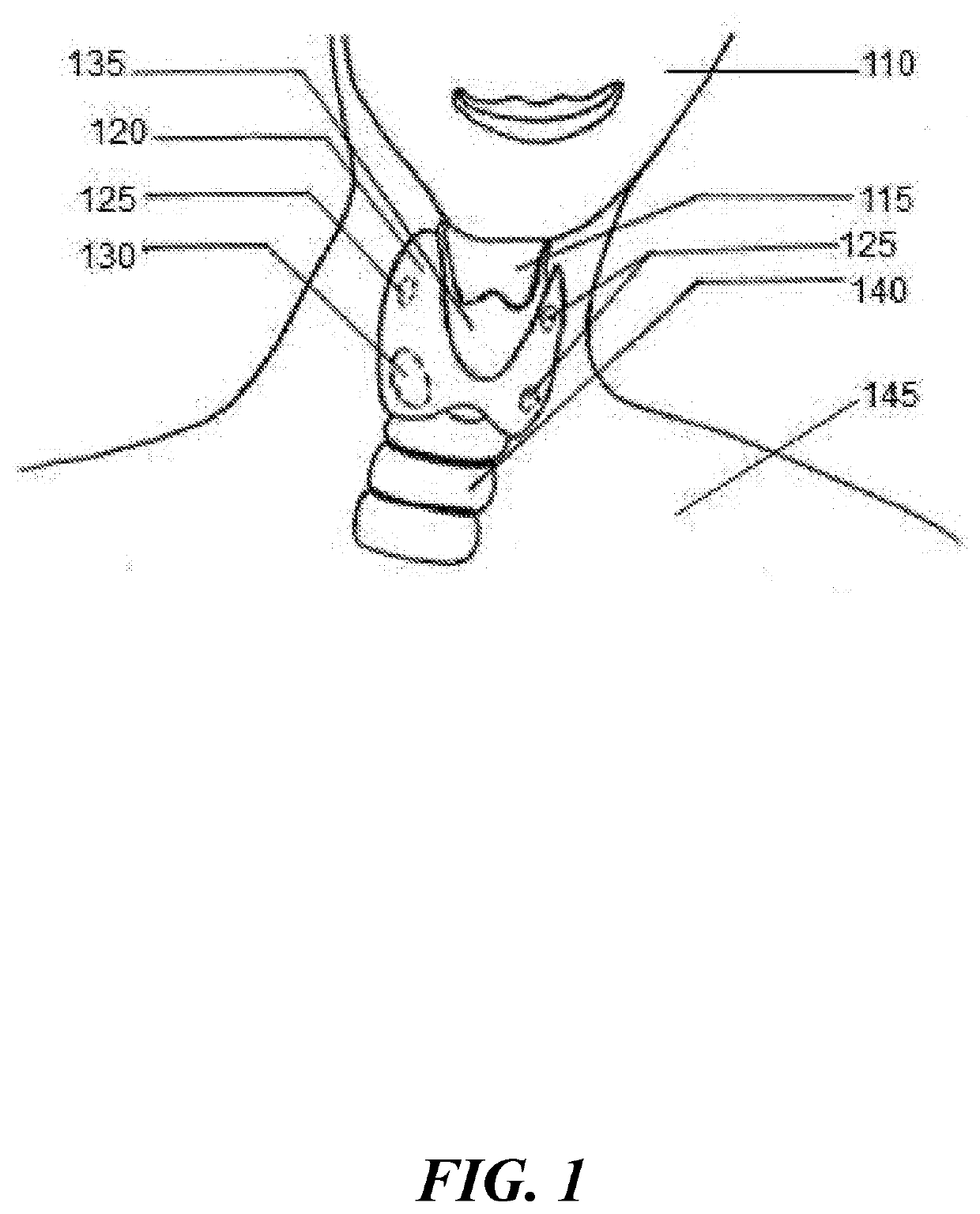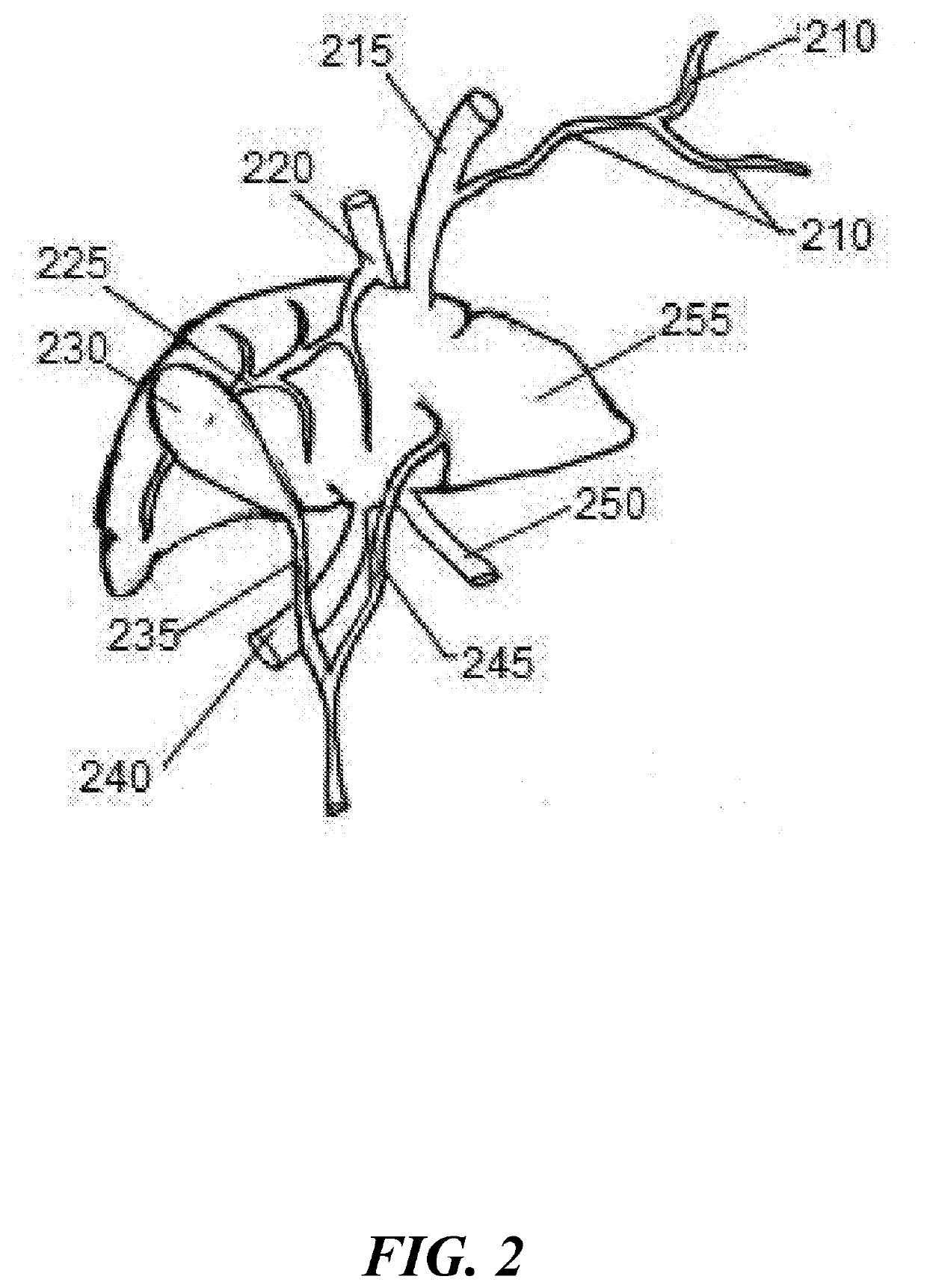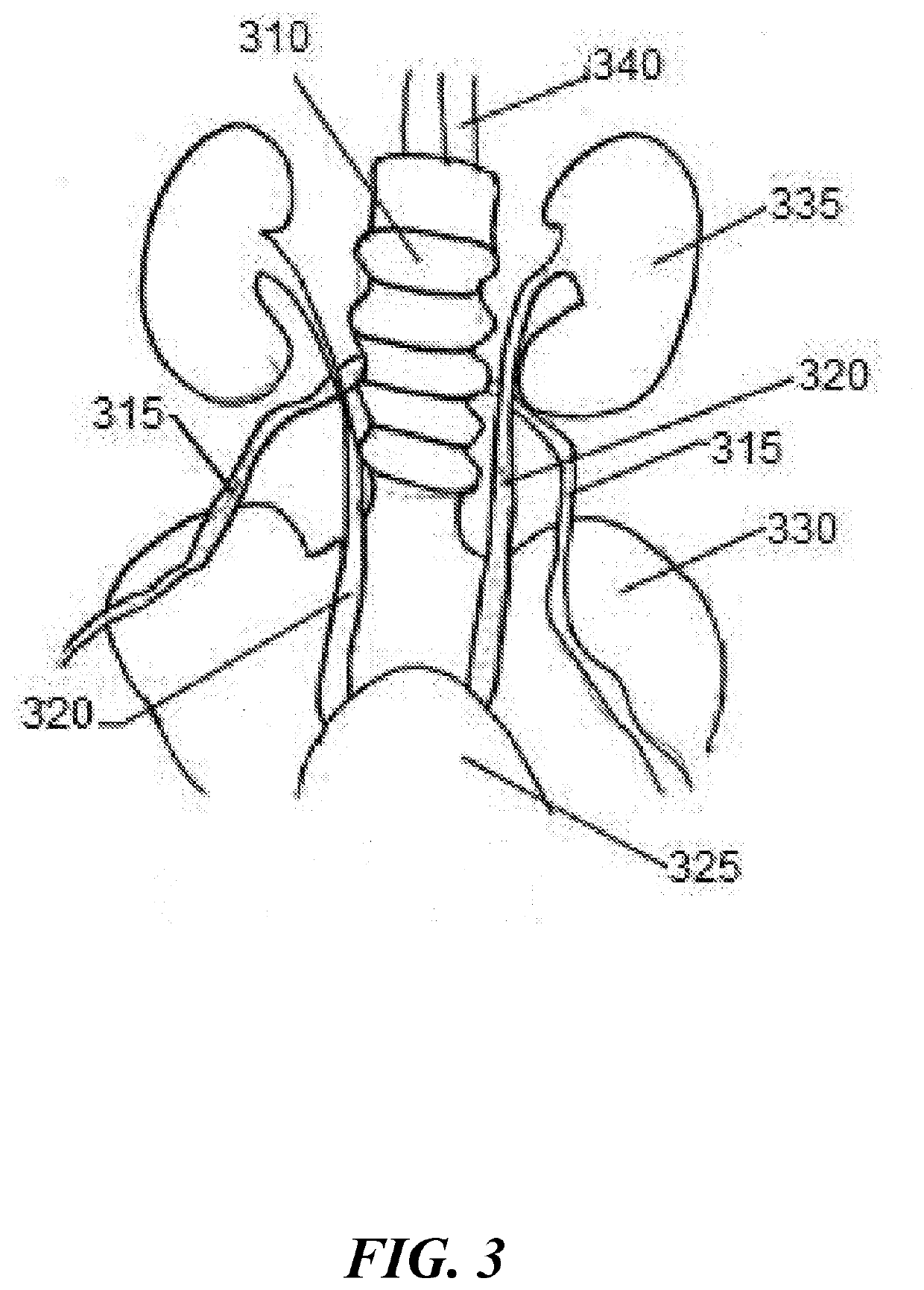Tissue specific markers for preoperative and intraoperative localization and visualization of tissue
a tissue specific and intraoperative technology, applied in the field of tissue specific markers for preoperative and intraoperative localization and visualization of tissue, can solve the problems of increased blood calcium, hypertension, and difficulty in dissecting only the portion of the thyroid that is affected without,
- Summary
- Abstract
- Description
- Claims
- Application Information
AI Technical Summary
Benefits of technology
Problems solved by technology
Method used
Image
Examples
example 1
of Aptamers that Selectively Bind Parathyroid Tissue
[0127]FIG. 13 illustrates the design of the SELEX process that resulted in the isolation of aptamers that bound parathyroid with high affinity and did not bind normal thyroid tissue. Briefly, single stranded DNA aptamers that bind specifically or with high affinity to parathyroid tissue can be selected using SELEX procedures known in the art. In this particular instance, the selection library included oligonucleotide sequences 84 nucleotides in length, of which 40 nucleotides were randomized, the first 23 nucleotides (5′-TAGGGAAGAGAAGGACATATGAT-3′) were conserved and served as the forward primer recognition sequence, and the last 21 nucleotides (5′-TTGACTAGTACATGACCACTT-3′) were conserved and served as the reverse primer recognition sequence. For positive selection, the library of aptamers was allowed to bind to normal human parathyroid tissue on a slide at room temperature. After 15 minutes, the slide was washed and all aptamers t...
example 2
ion of Parathyroid Specificity
[0132]FIG. 17A-G confirms the binding of SEQ ID NO:3 to normal human parathyroid tissue slides, the same exact tissue that was used for its selection. FIG. 18A-G confirms the binding of SEQ ID NO:4 to normal human parathyroid tissue slides, identical to the slides used for its positive selection. FIG. 19 shows the lack of binding to normal thyroid tissue slides, similar slides to the ones used for the negative selection of the aptamers. FIG. 19A shows SEQ ID NO:3 binding to thyroid; FIG. 19B shows SEQ ID NO: 4 binding to normal thyroid. In order to test whether these aptamers bound not only normal parathyroid tissue but also affected parathyroid adenoma tissue, the binding of these two aptamers to parathyroid adenoma tissue slides was done. FIG. 20A and FIG. 20B show the results of the binding to parathyroid adenoma of SEQ ID NO:3 and SEQ ID NO:4, respectively.
example 3
ion of Global Parathyroid Specificity
[0133]Additional testing was done to confirm that the parathyroid specificity that the aptamers were exhibiting was not the result of donor-specific determinants. Therefore, the aptamers were tested on additional parathyroid slides that originated from a completely different donor. FIGS. 21A and 21B show the results of the binding of SEQ ID NO:3 and SEQ ID NO:4 on two additional and unrelated parathyroid samples, respectively, proving that the aptamers were specifically targeting parathyroid and not donor-specific determinants.
PUM
| Property | Measurement | Unit |
|---|---|---|
| dissociation constant | aaaaa | aaaaa |
| molecular weight | aaaaa | aaaaa |
| affinity | aaaaa | aaaaa |
Abstract
Description
Claims
Application Information
 Login to View More
Login to View More - R&D
- Intellectual Property
- Life Sciences
- Materials
- Tech Scout
- Unparalleled Data Quality
- Higher Quality Content
- 60% Fewer Hallucinations
Browse by: Latest US Patents, China's latest patents, Technical Efficacy Thesaurus, Application Domain, Technology Topic, Popular Technical Reports.
© 2025 PatSnap. All rights reserved.Legal|Privacy policy|Modern Slavery Act Transparency Statement|Sitemap|About US| Contact US: help@patsnap.com



